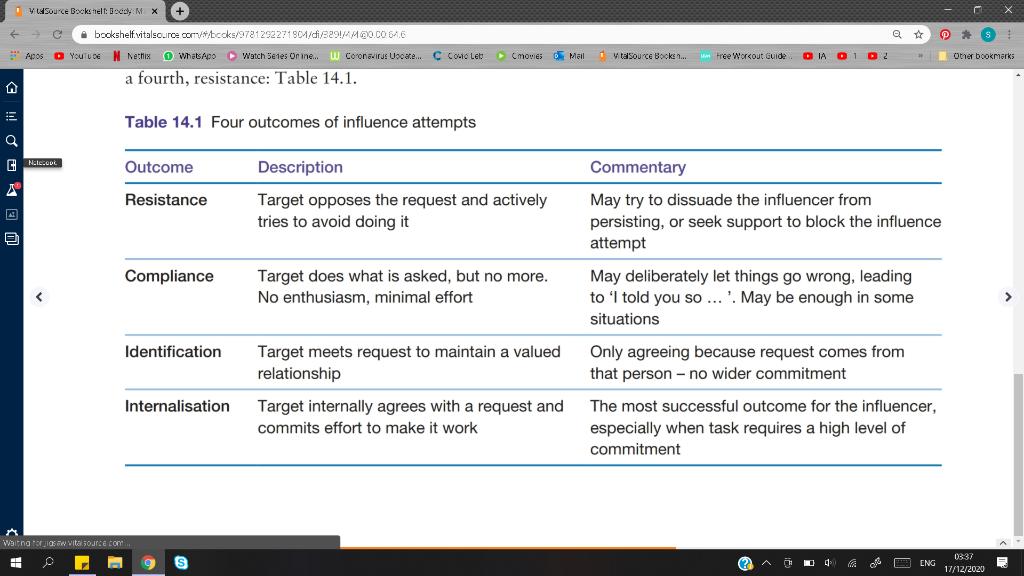Question
We do have standard procedures and rules and regulations. The underlying principle is to keep them to a minimum, and its about questioning why we
We do have standard procedures and rules and regulations. The underlying principle is to keep them to a minimum, and it’s about questioning why we need them. If there’s a business reason why that is the best way to deal with it, then we’re not afraid to put in policies and procedures, for example ISO 9001 (a widely adopted industry standard to demonstrate a company manages quality systematically). There is a mentality that people understand the need for processes when there’s something tangible. In manufacturing, people accept that that is required. Less so in areas like HR, where there is a reluctance to do anything that people would see as a limiting structure. If it increases profits, protects health and safety,
and if people can see tangible results, then there really isn’t too much of a problem. The buy-in is absolutely essential. You get buy-in by speaking to a few key influencers. You make a judgement about who is key to getting this project through, trying to see where opposition might come from, and trying to deal with it before you actually impose the procedure. You don’t need to get everyone committed – apart from those who actually have to do something. Buy-in is willingness to accept and to put effort in on behalf of the team.
Freedom of choice is not total. People will be asked at some point to go on a work commitment by the leader of a business group. When there is a pressing business objective, someone leading a commitment will find the right person for the job, in a way that is best for them and the company. Leaders may be appointed because people recognize they have exercised leadership within their function (say, as a chief chemical engineer). It could be that each plant has an overall business leader. We have a business leader for industrial filtration and, if there was particular skill needed on an area of work, he may decide to ask somebody to commit that,
Case questions 14.2
1. In terms of Table 14.1, which outcomes does Gore’s method of influencing appear to be securing?
2. Which of the ‘big five’ traits would you expect to find amongst associates in leadership positions at Gore?

!!! K Source Bookshelf: Boddy: MX C Apos YouTube Nalecook bookshelf.vitalsource YOUTUDEN Nethix WhatsApo Watch Setes On ine... a fourth, resistance: Table 14.1. + com/#/books/9781292271804/di/3291/4/4@0.00 64.6 Table 14.1 Four outcomes of influence attempts Outcome Resistance Compliance Identification Waiting for iasaw vital source.com. E Internalisation Watch Setes On ine... WCoronavirus Upcate.... C Couro Let Cmovies Mal Description Target opposes the request and actively tries to avoid doing it Target does what is asked, but no more. No enthusiasm, minimal effort Target meets request to maintain a valued relationship Target internally agrees with a request and commits effort to make it work 1 vitalSource Books .... Free Workout Guide IA O 02 May deliberately let things go wrong, leading to 'I told you so .... May be enough in some situations (? Q Commentary May try to dissuade the influencer from persisting, or seek support to block the influence attempt Only agreeing because request comes from that person - no wider commitment 4 The most successful outcome for the influencer, especially when task requires a high level of commitment " 218 ENG S # Other bookmarks 03:37 17/12/2020
Step by Step Solution
3.41 Rating (160 Votes )
There are 3 Steps involved in it
Step: 1
Solution 1 Introduction to Gores Principles Gore has devised an organizational culture where there i...
Get Instant Access to Expert-Tailored Solutions
See step-by-step solutions with expert insights and AI powered tools for academic success
Step: 2

Step: 3

Ace Your Homework with AI
Get the answers you need in no time with our AI-driven, step-by-step assistance
Get Started


